Abstract
The half-maximal stimulation of the rates of glycolysis and glycogen synthesis in soleus-muscle strips from sedentary animals occurred at a concentration of insulin of about 100 microunits/ml. In soleus-muscle strips from exercise-trained rats (5 weeks of treadmill training), half-maximal stimulation of the rate of glycolysis occurred at about 10 microunits of insulin/ml, whereas that for glycogen synthesis occurred between 10 and 100 microunits of insulin/ml. The sensitivity of glycolysis to insulin after exercise training is similar to that of adipose tissue from sedentary animals. This finding suggests that, in sedentary animals, the effects of normal changes in insulin concentration may affect muscle primarily indirectly via the anti-lipolytic effect on adipose tissue, whereas after training insulin may effect the rate of glycolysis in muscle directly. A single period of exercise did not change the sensitivity of glycolysis in soleus muscle to insulin, nor probably that of glycogen synthesis. It is suggested that the improvement in insulin sensitivity of glycolysis in muscle caused by exercise-training could account, in part, for the well-established improvement in glucose tolerance and insulin sensitivity observed in man and rats after exercise-training.
Full text
PDF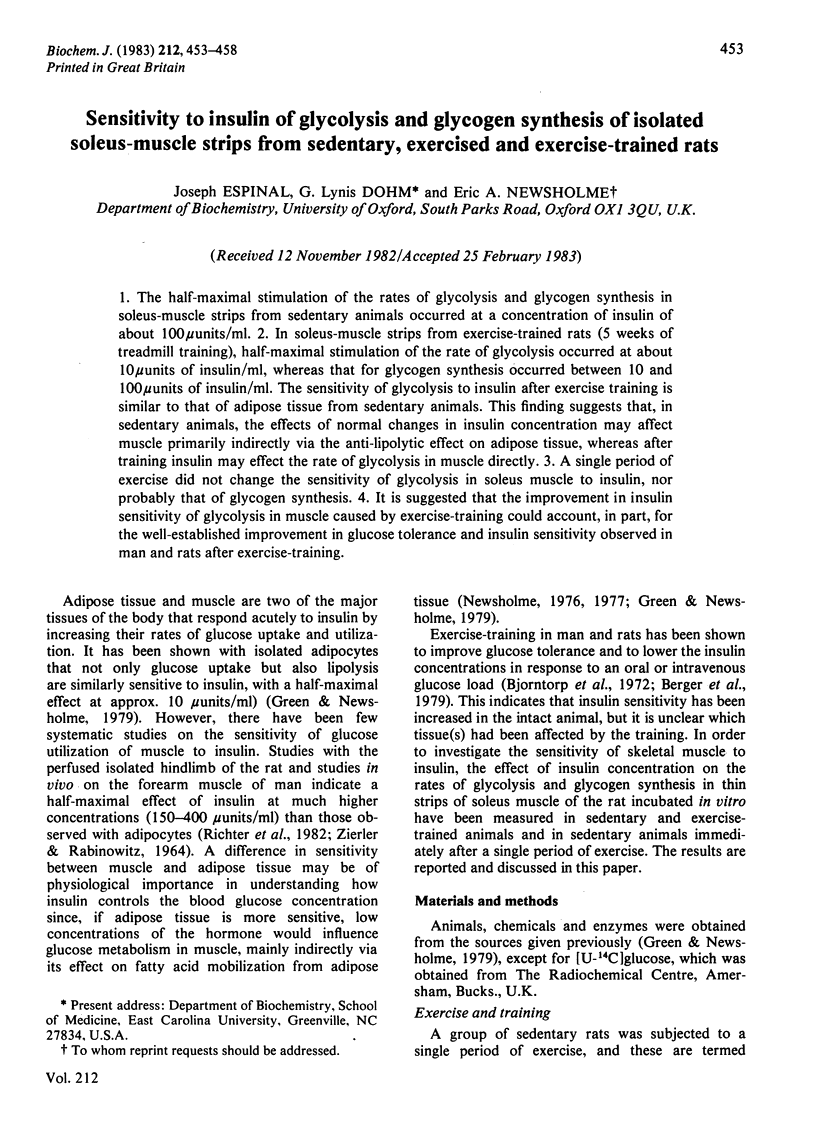
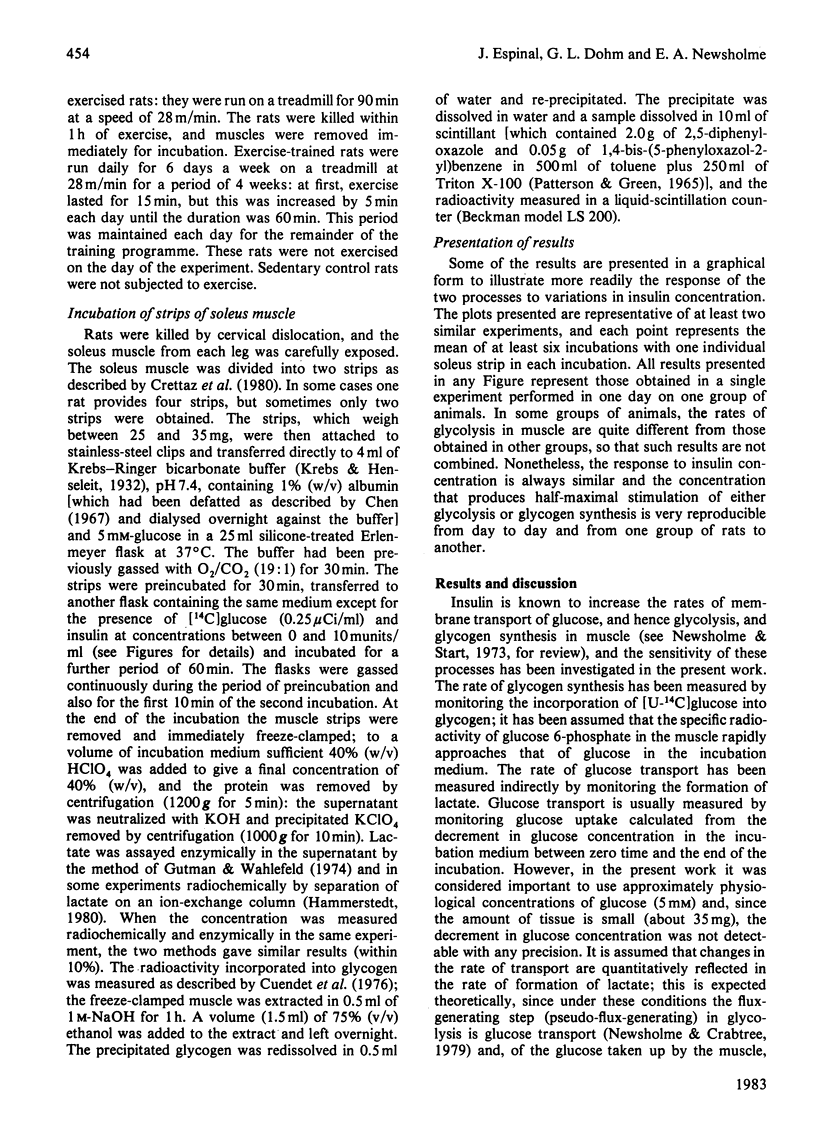
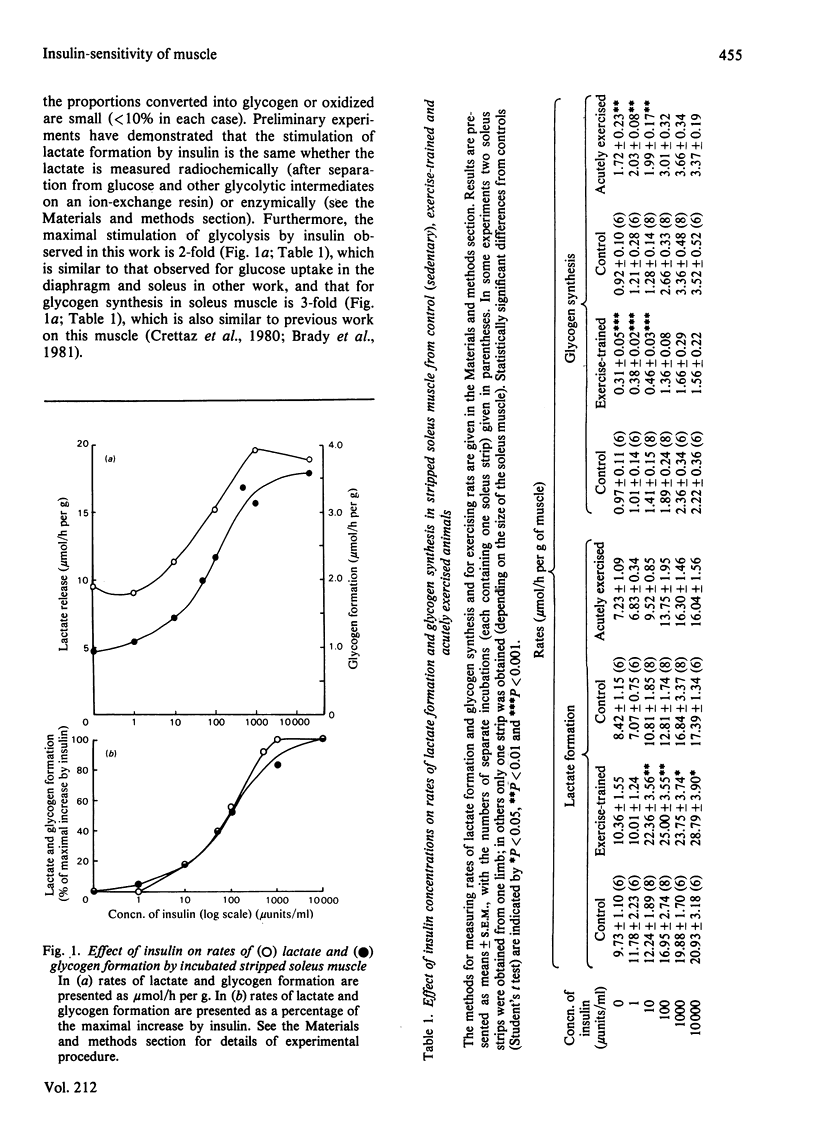
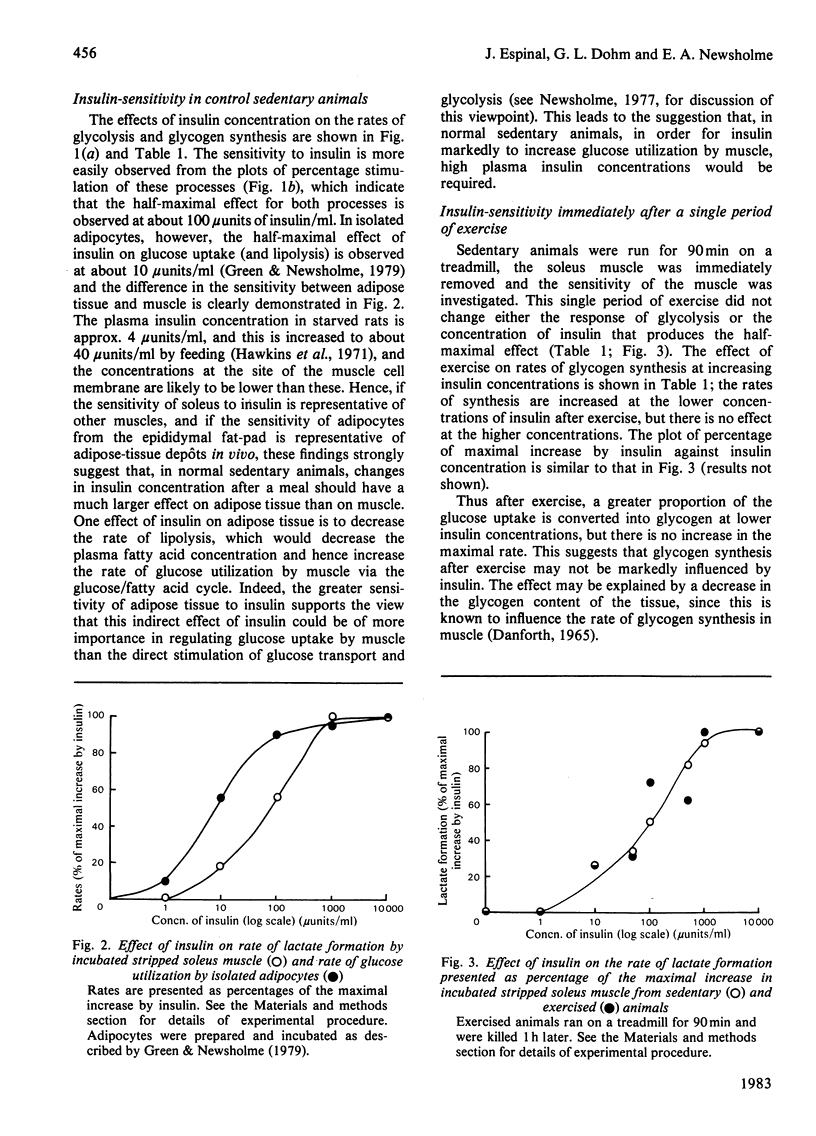
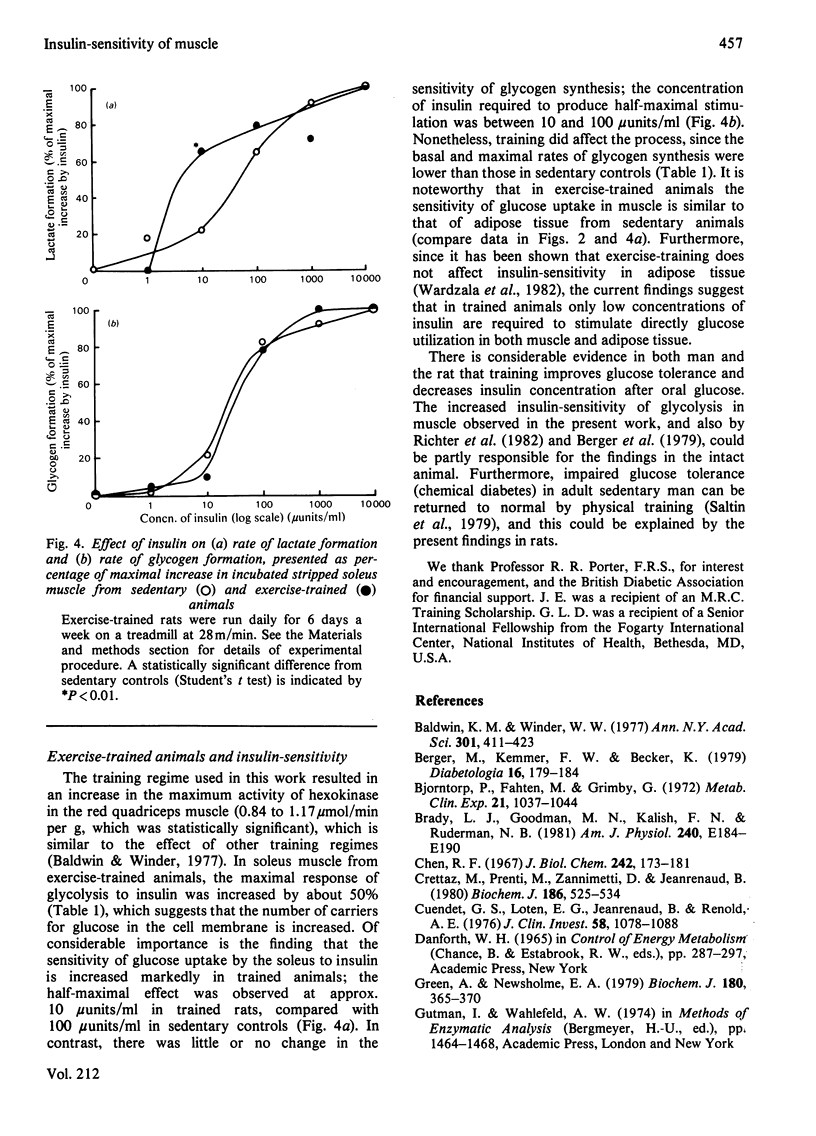
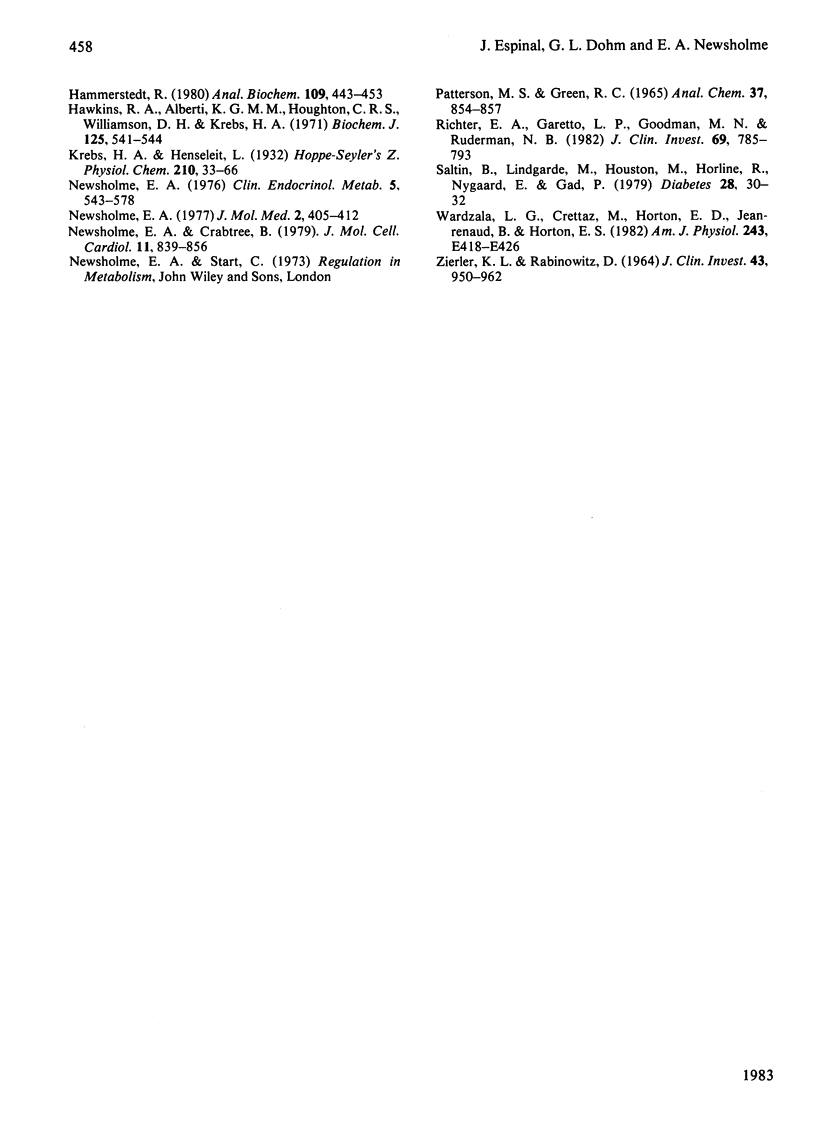
Selected References
These references are in PubMed. This may not be the complete list of references from this article.
- Baldwin K. M., Winder W. W. Adaptive responses in different types of muscle fibers to endurance exercise. Ann N Y Acad Sci. 1977;301:411–423. doi: 10.1111/j.1749-6632.1977.tb38217.x. [DOI] [PubMed] [Google Scholar]
- Berger M., Kemmer F. W., Becker K., Herberg L., Schwenen M., Gjinavci A., Berchtold P. Effect of physical training on glucose tolerance and on glucose metabolism of skeletal muscle in anaesthetized normal rats. Diabetologia. 1979 Mar;16(3):179–184. doi: 10.1007/BF01219795. [DOI] [PubMed] [Google Scholar]
- Björntorp P., Fahlén M., Grimby G., Gustafson A., Holm J., Renström P., Scherstén T. Carbohydrate and lipid metabolism in middle-aged, physically well-trained men. Metabolism. 1972 Nov;21(11):1037–1044. doi: 10.1016/0026-0495(72)90034-0. [DOI] [PubMed] [Google Scholar]
- Brady L. J., Goodman M. N., Kalish F. N., Ruderman N. B. Insulin binding and sensitivity in rat skeletal muscle: effect of starvation. Am J Physiol. 1981 Feb;240(2):E184–E190. doi: 10.1152/ajpendo.1981.240.2.E184. [DOI] [PubMed] [Google Scholar]
- Chen R. F. Removal of fatty acids from serum albumin by charcoal treatment. J Biol Chem. 1967 Jan 25;242(2):173–181. [PubMed] [Google Scholar]
- Crettaz M., Prentki M., Zaninetti D., Jeanrenaud B. Insulin resistance in soleus muscle from obese Zucker rats. Involvement of several defective sites. Biochem J. 1980 Feb 15;186(2):525–534. doi: 10.1042/bj1860525. [DOI] [PMC free article] [PubMed] [Google Scholar]
- Cuendet G. S., Loten E. G., Jeanrenaud B., Renold A. E. Decreased basal, noninsulin-stimulated glucose uptake and metabolism by skeletal soleus muscle isolated from obese-hyperglycemic (ob/ob) mice. J Clin Invest. 1976 Nov;58(5):1078–1088. doi: 10.1172/JCI108559. [DOI] [PMC free article] [PubMed] [Google Scholar]
- Green A., Newsholme E. A. Sensitivity of glucose uptake and lipolysis of white adipocytes of the rat to insulin and effects of some metabolites. Biochem J. 1979 May 15;180(2):365–370. doi: 10.1042/bj1800365. [DOI] [PMC free article] [PubMed] [Google Scholar]
- Hammerstedt R. H. A rapid method for isolating glucose metabolites involved in substrate cycling. Anal Biochem. 1980 Dec;109(2):443–448. doi: 10.1016/0003-2697(80)90675-2. [DOI] [PubMed] [Google Scholar]
- Hawkins R. A., Alberti K. G., Houghton C. R., Williamson D. H., Krebs H. A. The effect of acetoacetate on plasma insulin concentration. Biochem J. 1971 Nov;125(2):541–544. doi: 10.1042/bj1250541. [DOI] [PMC free article] [PubMed] [Google Scholar]
- Newsholme E. A. Carbohydrate metabolism in vivo: regulation of the blood glucose level. Clin Endocrinol Metab. 1976 Nov;5(3):543–578. doi: 10.1016/s0300-595x(76)80040-0. [DOI] [PubMed] [Google Scholar]
- Newsholme E. A., Crabtree B. Theoretical principles in the approaches to control of metabolic pathways and their application to glycolysis in muscle. J Mol Cell Cardiol. 1979 Sep;11(9):839–856. doi: 10.1016/0022-2828(79)90480-2. [DOI] [PubMed] [Google Scholar]
- PATTERSON M. S., GREENE R. C. MEASUREMENT OF LOW ENERGY BETA-EMITTERS IN AQUEOUS SOLUTION BY LIQUID SCINTILLATION COUNTING OF EMULSIONS. Anal Chem. 1965 Jun;37:854–857. doi: 10.1021/ac60226a017. [DOI] [PubMed] [Google Scholar]
- Richter E. A., Garetto L. P., Goodman M. N., Ruderman N. B. Muscle glucose metabolism following exercise in the rat: increased sensitivity to insulin. J Clin Invest. 1982 Apr;69(4):785–793. doi: 10.1172/JCI110517. [DOI] [PMC free article] [PubMed] [Google Scholar]
- Saltin B., Lindgärde F., Houston M., Hörlin R., Nygaard E., Gad P. Physical training and glucose tolerance in middle-aged men with chemical diabetes. Diabetes. 1979 Jan;28 (Suppl 1):30–32. doi: 10.2337/diab.28.1.s30. [DOI] [PubMed] [Google Scholar]
- Wardzala L. J., Crettaz M., Horton E. D., Jeanrenaud B., Horton E. S. Physical training of lean and genetically obese Zucker rats: effect on fat cell metabolism. Am J Physiol. 1982 Nov;243(5):E418–E426. doi: 10.1152/ajpendo.1982.243.5.E418. [DOI] [PubMed] [Google Scholar]
- ZIERLER K. L., RABINOWITZ D. EFFECT OF VERY SMALL CONCENTRATIONS OF INSULIN ON FOREARM METABOLISM. PERSISTENCE OF ITS ACTION ON POTASSIUM AND FREE FATTY ACIDS WITHOUT ITS EFFECT ON GLUCOSE. J Clin Invest. 1964 May;43:950–962. doi: 10.1172/JCI104981. [DOI] [PMC free article] [PubMed] [Google Scholar]


